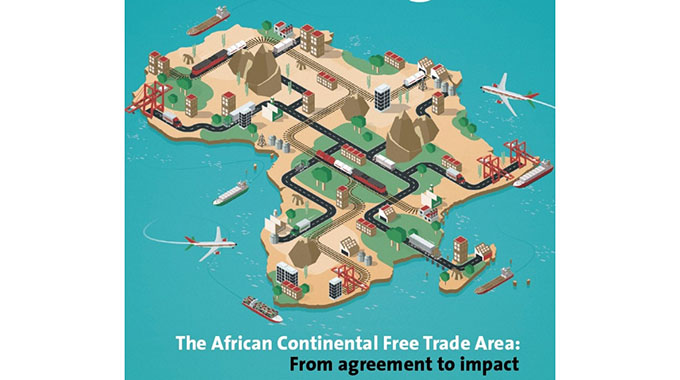AFCFTA: Competitiveness critical for survival, growth
WITH the African Continental Free Trade Area (AfCFTA) liberalising markets across the continent, competitiveness has become an indispensable part of Zimbabwe’s economic agenda, Industry and Commerce permanent secretary, Dr Thomas Utete Wushe has said.
Dr Wushe said this at a recent official launch of the 2023 Zimbabwe Competitiveness Report (ZCR) and the Soyabean Value Chain Competitiveness Report by the National Competitiveness Commission (NCC) in Harare.A landmark agreement to create a 55-nation trade AfCFTA bloc was signed in 2019, culminating in the launch of the world’s largest free trade zone at the AU summit in Niger.
The free trade bloc has a market of about 1,3 billion consumers with a total Gross Domestic Product (GDP) of US$3,4 trillion.The elimination of tariffs and trade barriers under AfCFTA is expected to boost intra-African trade by over US$450 billion by 2035. However, Zimbabwean businesses face competition from countries with more developed manufacturing sectors that produce products at lower production costs.
“I, therefore, implore every one of us to embrace this challenge collectively to enhance our country’s competitiveness and seize the opportunities presented by the enlarged market,” said Dr Wushe. A recent survey by the Confederation of Zimbabwe Industries (CZI) indicated that the majority of local firms were not yet ready for AfCFTA.
The lack of preparedness creates a vulnerability for the economy, potentially allowing cheaper goods from other countries to flood the market and erode the competitiveness of domestic industries. The ZCR presents a mixed picture of the country’s economic landscape. While positive signs include growing GDP and improved investor confidence, vulnerabilities remain.
The report highlights positive GDP growth, suggesting a strengthening economy while improved investor confidence signals a growing appetite for investment in Zimbabwe. However, over-reliance on primary goods like mining and agriculture leaves the economy exposed to fluctuations in commodity prices.
While the manufacturing capacity utilisation has shown slight improvement, significant idle capacity hinders competition with regional players. A decline in regulatory quality raises concerns about weak policies and regulations that could stifle private sector growth.
Government effectiveness scores remain low compared to peers, impacting business confidence and overall competitiveness. Zimbabwe’s GDP per capita lags behind regional averages, indicating lower purchasing power and living standards.While corporate tax rates are competitive, tax revenue as a percentage of GDP needs improvement. The report identifies high compliance costs and the need for streamlining legal processes to create a more competitive business environment.
On human capital, Zimbabwe’s growing population presents an opportunity for increased human capital supply and a larger market, key factors for enhanced competitiveness. The report highlights the burden of high utility costs like electricity and diesel prices.
The ZCR notes infrastructure development in transport and energy is essential for reducing costs and boosting overall efficiency. However, achieving true competitiveness requires a multi-pronged approach that goes beyond infrastructure. Regulatory reform is crucial to create a business-friendly environment.
Streamlining regulations, reducing compliance burdens and fostering digital skills development are critical steps. In addition, cluster development initiatives can encourage collaboration within industries, boosting innovation and efficiency.
The report underscores the importance of macro-economic stability to attract investment. Policies that promote fiscal stability, encourage savings and control inflation are critical. Further, Zimbabwe needs to leverage its natural resources, skilled workforce and recent fiscal stability to unlock its potential for inclusive and sustainable growth.
Turning to the soyabean value chain, high production costs and low producer prices have been identified as key challenges as these often leave farmers struggling to cover their costs, stifling the competitiveness of the entire value chain.The Ministry of Industry and Commerce is implementing several policies and programmes to achieve Vision 2030, including the Zimbabwe Motor Industry Development Policy, the Leather Sector Strategy and the Fertiliser Import Substitution Road Map.
It is also addressing critical issues such as improving ease of doing business, labour market performance, advancing digitalisation and supporting infrastructure development.These are crucial factors for boosting productivity and competitiveness.
Presenting the findings of the ZCR, Mr Brighton Shayanewako, director of the NCC, noted the urgency for Zimbabwe to improve its competitiveness. He warned that without significant improvement, domestic industries risk being “wiped out” by regional competition.-chroncie










